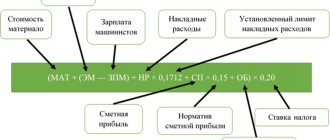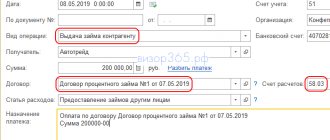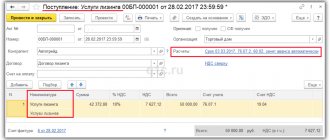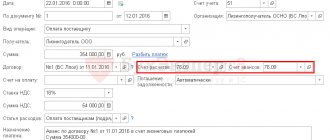Premiums: what an accountant needs to pay attention to
For length of service, special labor merits, or for holidays, memorable dates, etc., the employer has the right, at its discretion, to issue incentive (congratulatory) bonuses to employees. Payments are made based on an order signed by the head of the company. For this purpose, standard templates No. T-11 (for one employee) and No. T-11a (for several employees) are used. It is allowed to develop your own forms for such orders in the company, but taking into account the requirements of Federal Law No. 402 of December 6, 2011, Art. 9. Read the article in more detail: → Form T-11 and T-11a. Order on bonuses for employees in 2021.
The prescribed rules and regulations on the procedure for bonuses in local acts and employment contracts of the company are also taken into account. Mostly, this fact brings clarity and transparency to the grounds for applying bonuses and allows one to avoid labor disputes. Any changes (missing information or conditions) are made to the employment contract by separate agreement of the parties. At the same time, legal regulation regarding bonuses is carried out in accordance with the Tax and Labor Codes of the Russian Federation.
| Codes of the Russian Federation | Articles | Short description |
| Labor | 191 | incentives for work; |
| 135 | salary setting, including bonus system | |
| Tax | 255 | inclusion of bonuses in salary expenses; |
| 324.1 | accounting for the costs of creating a reserve for payments for length of service, vacations; | |
| 270 (p. 21-22) | tax-deductible expenses |
Information about incentives can be entered into the employees’ work book. Payments of cash bonuses are formalized and made using forms No. T-49, form No. T-53 (settlement and payment document), No. KO-2 (RKO - expense cash order) and by bank transfer.
Documenting
The basis for calculating a bonus is an order from the head of the organization to reward an employee (Form No. T-11) or a group of employees (Form No. T-11a). The employee (employees) must be familiarized with the order against signature (Section 1 of the instructions approved by Resolution of the State Statistics Committee of Russia dated January 5, 2004 No. 1).
Instead of standard forms of bonus orders, you can use independently developed forms of such documents (provided that they contain all the necessary details provided for in Part 2 of Article 9 of the Law of December 6, 2011 No. 402-FZ).
This procedure follows from Part 4 of Article 9 of the Law of December 6, 2011 No. 402-FZ and is confirmed by the letter of Rostrud of February 14, 2013 No. PG/1487-6-1.
Payment of bonuses from the cash register can be made:
- according to payroll or payroll (according to forms No. T‑49 or No. T‑53);
- according to an expense cash order (according to form No. KO-2).
This is stated in paragraph 6 of Bank of Russia Directive No. 3210-U dated March 11, 2014.
Taxation and accounting of employee bonuses
The specifics of taxation of bonus incentives are largely determined by their type. Remunerations for special production results are included in salaries (expenses for ordinary activities) and can be either one-time or regular (monthly, quarterly, annually). They are included in cost. The employer has an obligation to pay such bonuses, since they are provided for by the payment system.
Non-production incentives are assigned as one-time payments, are not part of the salary, and are taken into account in other expenses for the reporting period. Such incentives are paid only according to the distribution of the head of the organization. When paying bonuses from a stock source based on the owner’s decision, they are attributed to the undistributed (or accumulated, accumulated) profit of previous years.
Thus, production bonuses are paid under agreements (collective, labor) and are associated with production and sales costs. They are economically justified and involve generating income. Conversely, incentives of a non-production nature are not related to the performance of employees’ job duties and tax expenses are not taken into account. According to the Tax Code of Russia, Art. 270, paragraph 21, they are not taken into account when calculating profit in expenses.
Regardless of the taxation regime, the following are calculated for all types of bonuses paid from net profit:
- Personal income tax (13% for tax residents of Russia);
- insurance payments (FSS - 2.0%, PFR - 22%, FFOMS - 5.1%, from accidents - 0.2%).
⊕ Insurance premium rates for 2021
Taxpayers here are individuals (individual entrepreneurs and citizens, residents of the Russian Federation). These are working people who have income. The bonuses received are part of this income at the place of employment.
Exceptions are presented in the list of the Tax Code of the Russian Federation, Article 217 (clauses 6, 7). This includes awards for outstanding achievements in the field of culture, science, technology, art, etc., as well as for senior officials. These types of income are not subject to taxes.
Accounting
In accounting, reflect the accrual of bonuses at the expense of net profit by posting:
Debit 91-2 Credit 70
– bonuses paid to employees from net profit have been accrued.
This posting must be made regardless of whether the net profit of previous years or the current year is used to pay the bonus (including profit based on the results of the quarter, half a year, nine months). The fact is that such expenses cannot be reflected using account 84. These will be other expenses that also affect the financial result of the organization. Accordingly, such expenses must be reflected in the debit of account 91-2. Similar explanations are given in letters of the Ministry of Finance of Russia dated December 19, 2008 No. 07-05-06/260 and dated June 19, 2008 No. 07-05-06/138.
Accounting for bonuses under OSNO and simplified tax system in tax expenses
When including bonuses in tax expenses under the simplified tax system and the special tax system, one should be guided by the Tax Code of the Russian Federation, Art. 255 (about labor costs) and 346.6 (about the procedure for determining costs). Taking into account the requirements of the law, the tax base for profit and the single tax is reduced by the costs of bonuses paid to employees.
This option is possible when the employee is assigned bonuses of a production nature, and the fact of bonus payment itself is provided for by the collective and labor agreement. The bonus payment must be formalized by order in accordance with the established form. However, if profit in the event of an actual loss is indicated as the source of bonus payments, then such remunerations are not taken into account in tax expenses.
Reservation for long service gratuity
For the purpose of measured tax accounting, a taxpayer company has the right to create a reserve stock of future expenses for vacations, remuneration for long service and based on the results of work for the year (Tax Code of the Russian Federation, Article 324.1). To this end, the company is initially obliged to:
- record the selected reservation method in the accounting policy;
- set the maximum amount and monthly percentage of contributions for the reserve.
Expenses for the formation of reservations are included in the accounts of accounting expenses for wages. Deductions to an already created reserve are made in the same way in all cases. Estimated information about contributions (their amount) for each month to the formed reserve is reflected by the taxpayer in a special estimate.
At the end of the tax period, an inventory of the reserve is made. If the results show that part of the reserve amount has not been used, then this unused reserve portion is included in non-operating income for income tax. But if the credited funds from the reserve are not enough, then the unaccrued part of the reserve amount is related to income tax expenses for remuneration for the year (on the last day of the year). Accounting in both versions shows all transactions with account assignments:
- DT 20 (23, etc.), CT 96 - contributions to the formed reserve;
- DT 96, CT 70 - transfers for long service to employees;
- DT 20 (23, etc.), CT 96 - restoration of the unused reserve amount / inclusion of an insufficient (missing) reserve amount in expenses.
The company may subsequently refuse to form such a reservation. Then the residual amount as of December 31 in the year of its accrual is included in non-operating income of the current period.
Dividends
Dividends in a joint-stock company and income from participation in an LLC are always paid out of the company’s retained earnings (clause 2, article 42 of the Federal Law of December 26, 1995 No. 208-FZ “On Joint-Stock Companies”, clause 1 of article 28 of the Federal Law dated February 8, 1998 No. 14-FZ “On Limited Liability Companies”). That is, dividends reduce the balance of retained earnings in account 84.
What they often do wrong. They reflect annual or interim dividends in account 99, not 84. And in tax accounting they include dividends as expenses.
How to reflect it in accounting. The accrual and payment of dividends are events that occurred after the reporting date. This means that they must be taken into account according to special rules. When accruing and paying dividends for 2013, entries must be made in 2014. That is, when the accrual and issuance of money actually occur (clause 10 of PBU 7/98).
Reflect the accrued dividends in the debit of account 84 and the credit of account 75 of the subaccount “Calculations for the payment of income.” Such posting is expressly provided for in the Instructions for the Chart of Accounts for Accounting.
Example 1: At the end of the year, the accounting department accrued and paid income to the owners of the company
In March 2014, the owners of Vega LLC held a general meeting on the results of the previous year. Ivanov I.M. and Petrov A.I. (owners of the company) decided to direct part of the retained earnings reflected in account 84 to pay participation income. The total amount of net profit to be distributed was RUB 580,000. Ivanov and Petrov prescribed in the decision of the general meeting of participants dated March 5, 2014 to calculate income from participation in proportion to the shares of the founders. Ivanov's share is 70 percent, and Petrov's is 30 percent.
The accountant of Vega LLC calculated the amount of income of each participant. Ivanov’s income amounted to 406,000 rubles. (RUB 580,000 × 70%). And Petrov’s income is 174,000 rubles. (RUB 580,000 × 30%).
The accountant made entries on the accrual and payment of income based on the accounting certificate. A sample certificate can be viewed below.
And here are the wiring:
Debit 84 Credit 75 subaccount “Calculations for payment of income” - 406,000 rubles. — income was accrued to Ivanov;
Debit 84 Credit 75 subaccount “Calculations for payment of income” - 174,000 rubles. — income accrued to Petrov.
On March 7, the company’s accounting department withheld personal income tax from the founders and transferred the income to them:
Debit 75 subaccount “Calculations for payment of income” Credit 68 subaccount “Calculations for personal income tax” - 36,540 rubles. (RUB 406,000 × 9%) - personal income tax withheld from Ivanov’s income;
Debit 75 subaccount “Calculations for payment of income” Credit 68 subaccount “Calculations for personal income tax” - 15,660 rubles. (RUB 174,000 × 9%) - personal income tax withheld from Petrov’s income;
Debit 75 subaccount “Calculations for payment of income” Credit 51 - 369,460 rubles. (406,000 – 36,540) — dividends were paid to Ivanov;
Debit 75 subaccount “Calculations for payment of income” Credit 51 - 158,340 rubles. (174,000 – 15,660) — dividends were paid to Petrov.
An important detail When paying dividends for 2013, entries must be made in 2014, that is, when the accrual and issuance of money actually occurs (clause 10 of PBU 7/98).
Supplement for working on a rotational basis
If an employee is forced to frequently travel to his place of work and is not able to return to his place of permanent residence every day (for example, during the construction of a facility in a remote area), he may be paid a bonus for the mobile nature of his work. As a rule, such allowances are established in construction organizations.
The bonus for the mobile nature of work is calculated as a percentage of the employee’s hourly (daily) rate or monthly salary.
– in the regions of the Far North, Amur Region, Khabarovsk and Primorsky Territories – 40%;
– for other regions – 30%.
The allowance is accrued for all days of stay at a remote work site, as well as for days on the way from the location of the organization or assembly point to the place where the work will be performed.
An allowance for the traveling nature of work is paid if the employee performs work while traveling all or most of the time (for example, couriers, forwarders).
The allowance for the traveling nature of work is set as a percentage of the hourly (daily) wage rate or the employee’s monthly salary.
– 20% if the employee travels 12 or more days a month;
– 15% if the employee travels less than 12 days a month.
The company can reduce its tax profit by the amount of allowances, but provided that these allowances are fixed in the labor (collective) agreement with employees. This was stated in the letter of the Ministry of Finance of Russia dated November 16, 2004 N 03-03-01-04/1/110.
The amount of allowances for the traveling nature of work is subject to personal income tax, insurance contributions to extra-budgetary funds and contributions for insurance against industrial accidents and occupational diseases in the generally established manner.
When working on a rotational basis, employees do not have the opportunity to return every day to their place of permanent residence (for example, workers of a construction company located in Murmansk are sent to a construction site in a remote area of the Murmansk region).
In this case, the movement of workers to another area is not considered a transfer to another place of work.
Employees involved in work on a rotational basis live in special rotation camps during their stay at the site.
Shift work is usually divided into shifts, which are called shifts.
A shift is considered to be a total period, including the time of work at the site and the time of rest between shifts in the rotation camp.
The duration of the shift should not exceed one month. In exceptional cases, the duration of the shift may be increased to three months.
When working on a rotational basis, a summarized accounting of working time is established for a month, quarter or other longer period, but not more than for one year.
regions of the Far North and equivalent areas - 75%;
for regions of the European North, Siberia and the Far East, as well as areas of development of the Caspian oil and gas complex - 50%;
for other regions – 30%.
For employees of construction and installation organizations, as a rule, a bonus for shift work is established in the amount of 75% of their monthly tariff rate and monthly salary.







